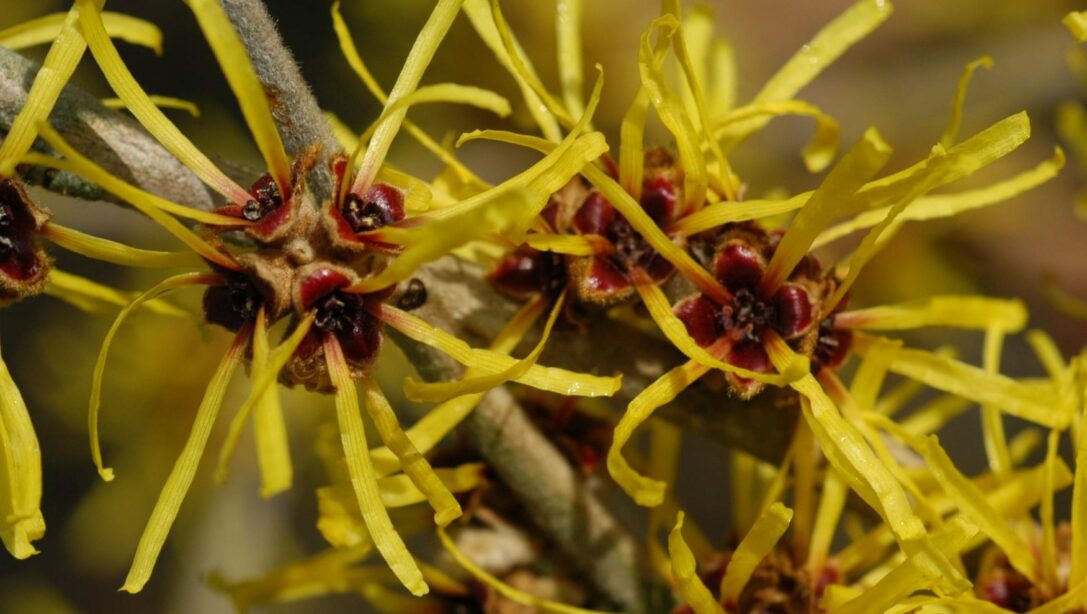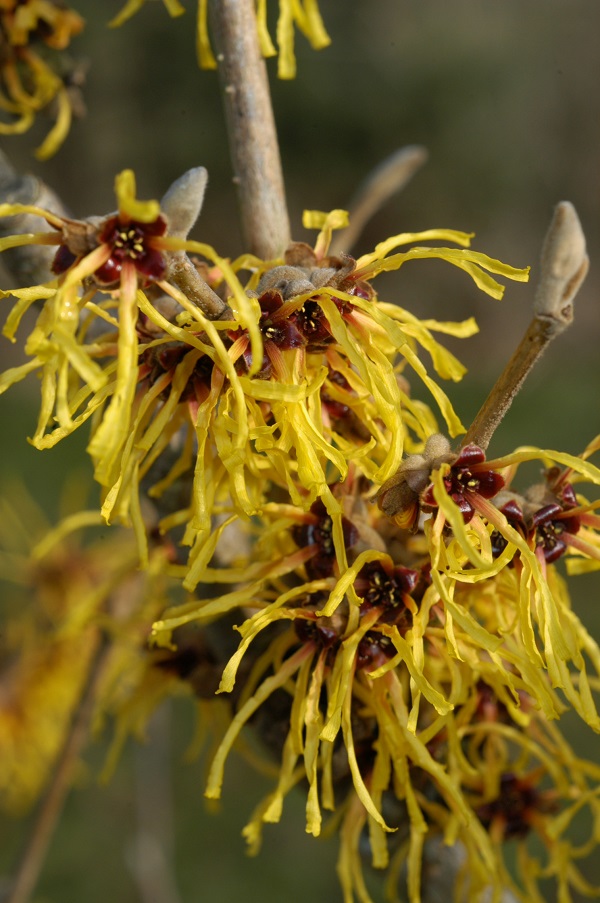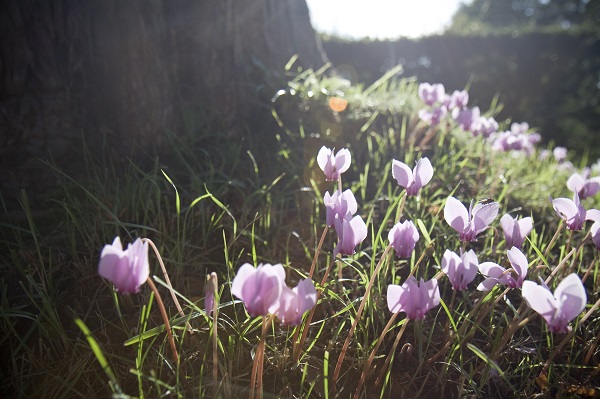Hamamelis, better known as witch hazel is a genus of beautiful medium to large shrubs or small trees. Mainly flowering in winter they bring colour, texture and a delightful scent to the garden at a time when it most needs it.
The branches are typically covered with distinctive, spider like flowers in shades of yellow, orange and red from December through to early spring. These are borne on bare branches after the attractive autumn foliage has fallen and are highly fragranced.
Hamamelis Varieties
There are a wide range of hamamelis varieties available. Some of our favourites include varieties of Hamamelis mollis, which is native to central and eastern China and Hamamelis x intermedia, which is a hybrid of H. mollis and H. japonica and includes many varieties with the RHS Award of Garden Merit. (RHS AGM)
Hamamelis x intermedia ‘Arnold Promise’
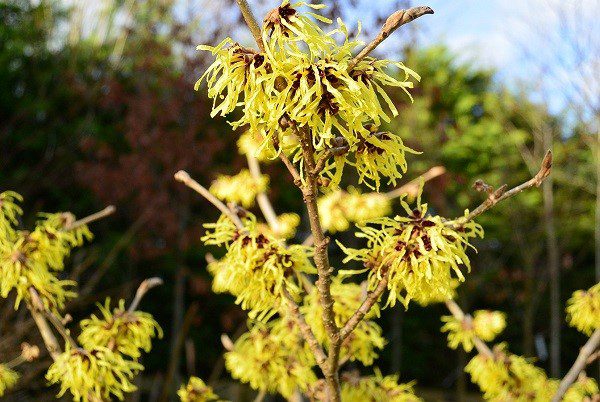
A vigorous, deciduous shrub with ovate green leaves that turn red yellow in autumn. The freely borne spidery flowers appear in winter, bringing bright yellow to the garden along with a beautiful fragrance. Has the RHS AGM.
| Sun requirements | Full sun to partial shade |
| Soil | Any moist but well-drained soil |
| Hardiness | Hardy to -15 °C |
| Size | Grows to 4m height x 4m spread |
| Flowering time | December to March |
Hamamelis x intermedia ‘Barmstedt Gold’
A hardy, upright and large shrub. The green leaves take on attractive yellow colour in the autumn. Large deep, golden-yellow flowers with a faint scent are produced on the bare branches in late winter into early spring. Has the RHS AGM.
| Sun requirements | Full sun to partial shade |
| Soil | Any moist but well drained soil |
| Hardiness | Hardy to -15 °C |
| Size | Grows to 4m height x 4m spread |
| Flowering time | December to March |
Hamamelis x intermedia ‘Jelena’
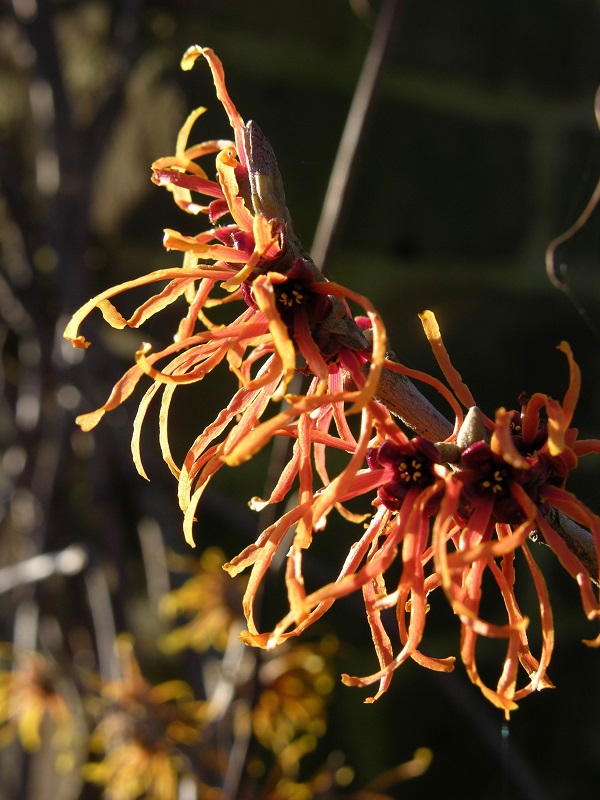
A superb variety of Hamamelis with a vigorous, spreading habit. The broad green leaves of H. ‘Jelena’ turn red and yellow in autumn. The dense clusters of attractively scented coppery-orange flowers emerge from late winter. Has the RHS AGM.
| Sun requirements | Full sun to partial shade |
| Soil | Any moist but well-drained soil |
| Hardiness | Hardy to -15 °C |
| Size | Grows to 4m height x 4m spread |
| Flowering time | December to March |
Hamamelis x intermedia ‘Rubin’
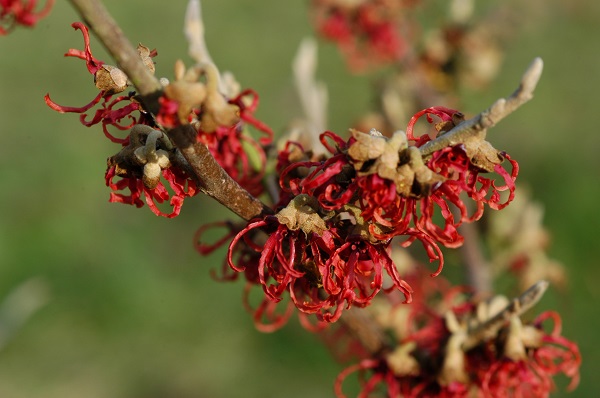
This variety of Hamamelis x intermedia is a German selection with scented ruby-red flowers. The broadly oval green leaves turn yellow and orange in autumn. Has the RHS AGM.
| Sun requirements | Full sun to partial shade |
| Soil | Any moist but well-drained soil |
| Hardiness | Hardy to -15 °C |
| Size | Grows to 3m height x 3m spread |
| Flowering time | December to March |
Hamamelis mollis ‘Jermyns Gold’
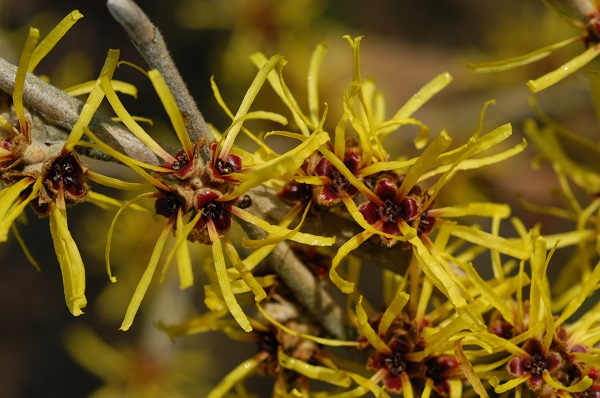
An attractive, erect variety of Hamamelis with rounded, softly hairy leaves. The clusters of large, sweetly fragranced yellow flowers are borne from December to March. Originally collected by plant hunter Ernest Wilson, it was named by Hillier Nurseries in 2000. Has the RHS AGM.
| Sun requirements | Full sun to partial shade |
| Soil | Any moist but well-drained soil |
| Hardiness | Hardy to -15 °C |
| Size | Grows to 1.8m height x 2m spread |
| Flowering time | December to March |
Growing Guide
Planting
Hamamelis do best positioned in a sunny spot, although they will also tolerate partial shade. Plant in moist, well drained soil.
Pruning
Prune after flowering in mid to late spring to maintain a neat, attractive shape. Remove any dead or damaged wood and prune each branch back to healthy, young growth. It will tolerate more severe pruning if you want to reduce its size.
Protection
Witch hazels should be regularly watered until they are fully established which often is up to 3 years. A lack of water can cause flowers to drop, so it’s best to continue to water throughout dry periods.
Planting Ideas
Underplant hamamelis with winter and early spring perennials. Winter hellebores, such as H. niger and H. x ericsmithii varieties, will flower before Christmas bringing added brightness to the garden. You may also want to try underplanting with hardy cyclamen, winter aconites or snowdrops.
Fact
Despite the sound of its common name, Witch Hazel is unlikely to be originally derived from the word ‘witch’. Instead, the word originates from the Old English wice, which means ‘bendable’.


